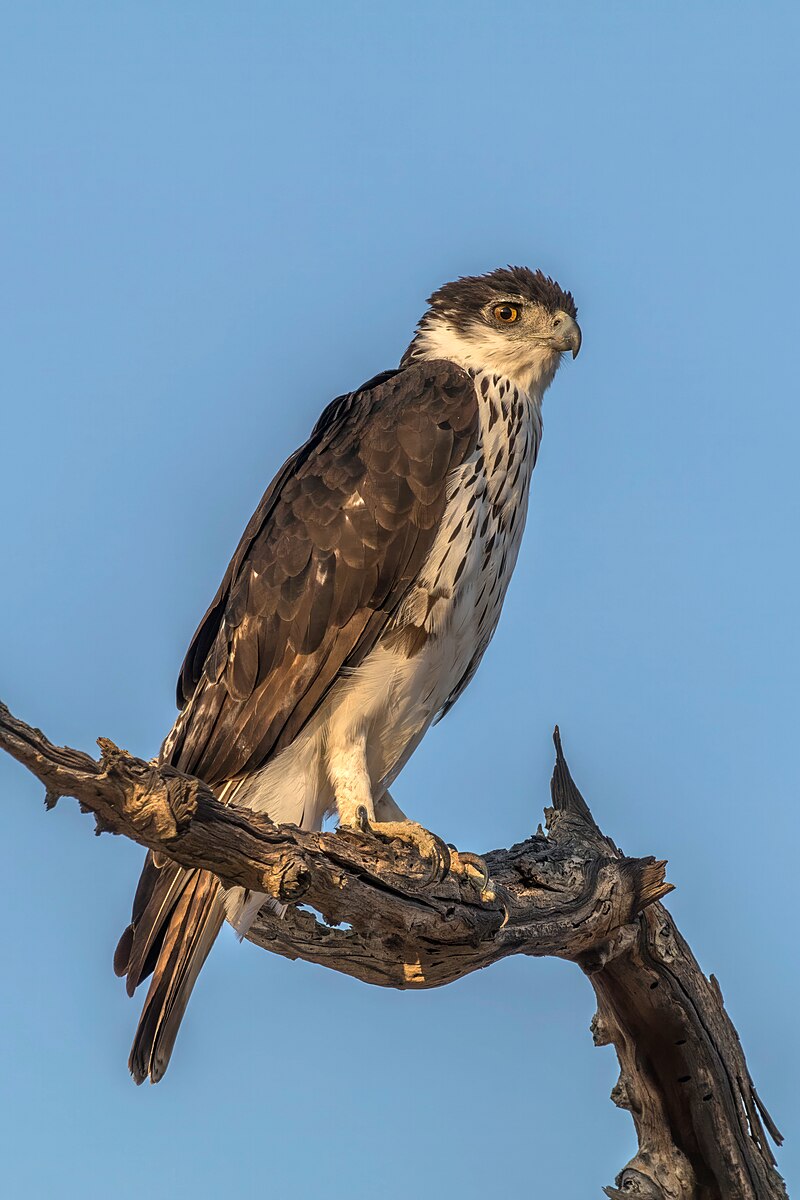The African hawk-eagle, scientifically known as Aquila spilogaster, is a medium-sized bird of prey found in tropical Sub-Saharan Africa. It is known for its distinctive call and has a somewhat small head that protrudes quite well due to its long neck and relatively prominent beak.
Distinctive Features of the African Hawk Eagle Nose
The African hawk-eagle possesses several unique features that set it apart from other raptor species:
-
Prominent Beak: The African hawk-eagle has a relatively large and prominent beak, which is a distinctive feature of this species. The beak is hooked and powerful, allowing the bird to easily tear apart its prey.
-
Long Neck: The African hawk-eagle has a long, slender neck that helps it to extend its head and beak, giving it a more pronounced appearance.
-
Small Head: Despite its large beak and long neck, the African hawk-eagle has a relatively small head compared to its overall body size. This feature, combined with the long neck, gives the bird a unique and distinctive look.
-
Robust Feet: The African hawk-eagle has large, robust feet with sharp talons, which it uses to capture and hold its prey.
Plumage and Coloration
 Image source: African hawk-eagle by Charles J. Sharp
Image source: African hawk-eagle by Charles J. Sharp
The adult African hawk-eagle has a distinctive pied appearance, with slate black-grey coloration on the upper parts and whitish coloration on the underside. The tail is grey with thin dark bars, a broad subterminal band, and a white tail tip. The underside is white with bold but small and sparse drop-like blackish streaks.
Juvenile African hawk-eagles, on the other hand, are moderately dark brown above with some pale edging, a slightly black-streaked head, and a more clearly barred tail than adult hawk-eagles. The underside has a tawny-rufous base color, and the black shaft streaks are usually only obvious on the flanks.
Size and Measurements
The African hawk-eagle is a medium-sized bird of prey, with the following measurements:
- Length: 22-26 inches (56-66 cm)
- Wingspan: 51-63 inches (130-160 cm)
- Weight: 3.3-4 lb (1.5-1.8 kg)
Females are generally larger than males, but the two sexes are similar in appearance.
Hunting and Feeding Habits
The African hawk-eagle is a versatile hunter, employing a variety of strategies to capture its prey. These include:
- Perching and waiting for prey to pass by
- Flying quickly through trees to flush out prey
- Soaring high and then stooping onto its prey
The African hawk-eagle’s diet consists of a wide range of prey, including birds, mammals, reptiles, and insects.
Conservation Status and Threats
The African hawk-eagle is currently categorized as a species of Least Concern by the IUCN. However, it is facing serious threats, including habitat loss due to deforestation and persecution by farmers who view them as a threat to their domestic chickens and other fowl.
Over the past few decades, the African hawk-eagle has become scarce to rare outside of protected areas across Africa. Conservation efforts are crucial to ensure the long-term survival of this majestic raptor.
Conclusion
The African hawk-eagle is a truly remarkable bird of prey, with its distinctive features, including its prominent beak, long neck, and small head. Despite the challenges it faces, this species continues to captivate birdwatchers and nature enthusiasts alike. By understanding and appreciating the unique characteristics of the African hawk-eagle, we can work to protect this incredible bird and ensure its survival for generations to come.
References:
– Wikipedia – African Hawk-eagle
– Operation Migration – African Hawk Eagle: The Ultimate Guide
– The Peregrine Fund – African Hawk-eagle


